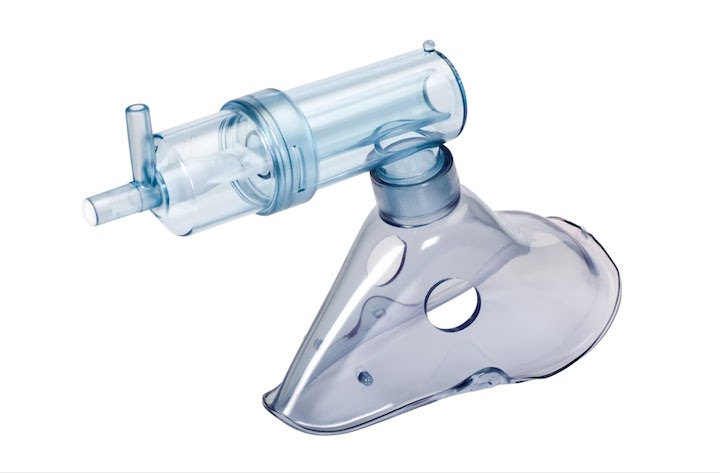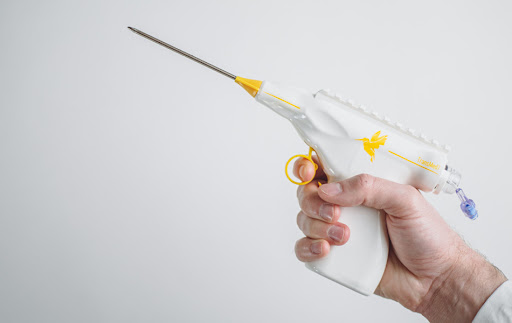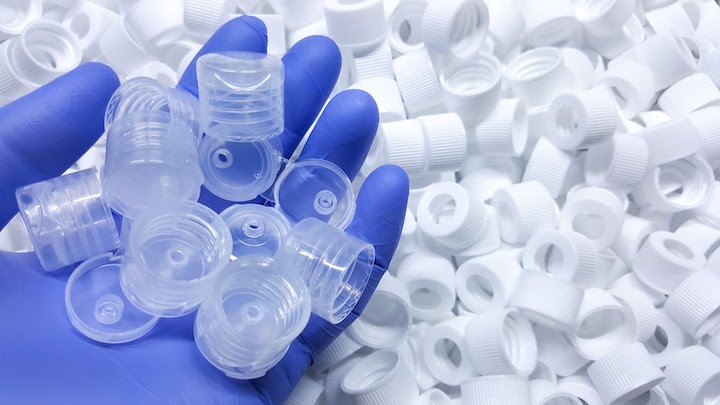Time to read: 6 min
Plastic injection molding is used in many different applications within the medical industry. Examples include enclosures for medical equipment, the overmolding of surgical tools, and spinal implants. Designers have a choice of materials, but the selected plastic must meet the application’s requirements. For example, plastics that will be sterilized with steam need to resist high temperatures and moisture, while those that will come into contact with patients must be biocompatible, meaning that they’re not harmful to living tissue.
Designers also need to select plastics that meet medical industry standards. This article examines the standards that affect the production of injection-molded medical products. By selecting materials that meet these standards, designers do more than meet requirements from independent bodies and regulatory agencies — ultimately, they promote quality, performance, and safety.
Of course, proper product design is also critical for medical devices, so check out our free Injection Molding Design Guide for best practices — it complements the info in this article.
Download Fictiv’s Injection Molding Design Guide

Importance of Standards in the Medical Industry
Industry standards play an important role in the design and manufacture of medical products, especially medical devices. For designers, these standards help ensure that patients, the end-users of injection molded products, are not exposed to excessive risks during medical treatment. So injection molders must implement stringent processes and procedures to control all stages of production and comply with standards.
Medical Device Classes
Medical devices are classified according to their potential for causing harm to patients, the general public, or to other personnel who use or operate the medical device. This classification determines the degree of required regulatory oversight.
The U.S. FDA (Food and Drug Administration), and the EU MDR (Medical Device Regulation) both divide medical devices into three classifications, where Class I refers to the lowest-risk medical devices and Class III refers to the highest-risk. The EU MDR further breaks down Class II devices into two subcategories: IIa and IIb.
Class I medical devices are not intended to support or sustain life and will not present an unreasonable risk of illness or injury to a patient. Examples include wheelchairs, glasses, hospital beds, and test tubes.
Class II encompasses any medical device for which general controls are deemed insufficient to provide reasonable safety and effectiveness. Examples include contact lenses, syringes, and pregnancy tests. The EU MDR adds two subcategories:
- Class IIa refers to devices that present a medium risk.
- Class IIb refers to devices that pose a high risk.
Class III medical devices are usually designed to sustain or support life and may present an unreasonable risk of injury or illness. Examples include pacemakers, defibrillators, and implanted prostheses.

Common Medical Injection Molding Standards
The medical device industry is tightly controlled to ensure patient safety. Listed below are some of the common standards that affect manufacturing, including plastic injection molding.
- ISO 13485 – Medical Devices
- ISO 10993 – Biological Evaluation of Medical Devices
- ISO 14644 – Cleanrooms & Associated Controlled Environments
ISO 13485 – Medical Devices
ISO 13485 outlines the requirements for a quality management system (QMS) when producing medical-grade products. It is the most common standard used in medical device manufacturing. ISO 13485 is not limited to plastic injection molding but rather covers the general requirements for all manufacturing technologies that are used to produce medical equipment. This standard was developed to ensure that consistent quality is maintained and that medical devices and equipment are produced in a safe and effective manner.
To achieve these goals, ISO 13485 outlines processes and procedures to manage risk and regulatory compliance while providing mechanisms to continuously improve the QMS whenever a gap or potential for improved performance is noted. The standard defines best practices for documentation, training, traceability, research and design, production, and how to handle non-conformances. For both the part designer and the injection molders, there are well-defined responsibilities.
The QSR (Quality System Regulations), also referred to as 21 CFR part 820, as outlined by the FDA, has many parallels with ISO 13485. In the United States, the QSR may be used as a supplement or replacement for the ISO 13485 standard.
ISO 10993 – Biological Evaluation of Medical Devices
ISO 10993 focuses primarily on the biocompatibility requirements for medical devices. It encompasses products that are designed to come into direct or indirect contact with the body. The goal of ISO 10993 is to reduce the risk of adverse effects on patients when exposed to materials that include, but are not limited to, injection molded plastics. ISO 10993 compliant materials are non-toxic, do not affect the immune system, or do not potentially cause cancer.
The ISO 10993 standard consists of 23 parts or subsections. This includes processes and procedures for animal welfare requirements, tests for carcinogenicity, reproductive toxicity, in vitro cytotoxicity, and various sterilization techniques. USP (United States Pharmacopeia) Class VI covers similar biocompatibility requirements for plastics and, as such, is sometimes used in place of ISO 10993 or as a supplement. For designers, this standard can play an important role in material selection.
ISO 14644 – Cleanrooms & Associated Controlled Environments
ISO 14644 regulates the use of cleanrooms during medical device manufacturing. It defines the various cleanroom classes from Class 1 to Class 9, where Class 1 has the most stringent cleanliness requirements.
In cleanrooms, the amount and size of airborne particles are carefully controlled to reduce the chances of exposing sensitive medical components to these particles. ISO 14644 also outlines specific requirements for designing, manufacturing, and maintaining cleanrooms for optimal performance. Designers may need an injection molder with a Class 7 or Class 8 cleanroom to limit the potential for contamination during manufacturing.

What Is Injection Molding Used for in the Medical Industry?
Medical injection molding can be used for prototyping or low-volume production, but it’s often used in high-volume manufacturing for medical devices. In part, that’s because products can be injection molded at-scale with consistent quality and with minimal human intervention. Here are some common examples of injection-molded medical products:
- Device enclosures
- Lab consumables
- Implants
- Pregnancy tests
- Surgical equipment
- Orthopedics
- Syringes
- Oxygen masks
Medical Grade Plastics for Injection Molding
For designers, it’s important to remember that not all polymers are suitable for medical devices. However, injection molding supports the use of many different materials, typically commodity plastics but also specialty plastics and polymer blends. Designers can also choose medical plastics that have specific trade names like ULTEM®, a polyetherimide (PEI) that can withstand repeated cycles in an autoclave. Below are some common injection molding plastics and their salient characteristics:
- PEEK (Polyetheretherketone): This thermoplastic has exceptional resistance to chemicals, heat, and radiation.
- PE (Polyethylene): Polyethylene is considered to be a commodity thermoplastic but is widely used in the medical industry because it’s biocompatible.
- Silicone: Silicone is a thermosetting polymer, made from a mixture of two parts. These parts are injected into a mold via a mixer at a comparatively lower pressure compared to standard injection molding. Silicone is biocompatible and has excellent flexibility.
- PP (Polypropylene): Polypropylene is a commodity thermoplastic with excellent moisture and wear resistance. It’s also biocompatible and can be steam-sterilized because of its high-temperature resistance.
- PC (Polycarbonate: Polycarbonate is an engineering thermoplastic that is often used as a replacement for glass. It’s transparent, has relatively high-temperature resistance (meaning it can be sterilized), and is extremely tough.
- PFA (Perfluoroalkoxy): This fluoropolymer has very high thermal resistance, excellent creep resistance at elevated temperatures, and resists a wide range of chemicals.
- FEP (Fluorinated ethylene propylene): This fluoropolymer has low friction, good impact resistance, and excellent chemical resistance. FEP is also flexible, transparent, and considered to be biocompatible.
Fictiv – Injection Molded Medical Products at Ridiculous Speeds
Fictiv can produce injection-molded products for a wide range of medical applications. We have the resources, know-how, and manufacturing network to deliver the injection molded parts that you need, far faster than other manufacturers. And, we deliver 95.4% of orders on time and to spec, thanks to our network of highly-vetted partners, on-site quality engineers, and robust quality management system.
Create an account and upload your medical device design today! Along with your quote, you’ll receive expert design for manufacturing (DFM) feedback and guidance to ensure you get great outcomes.










